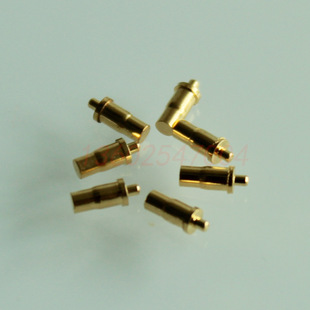
The spring charging pin is a connector that our electronic engineers often
use. It is generally composed of a needle, a spring, and a needle tube. It has
many different types of structures, and the double-ended spring charging pin is
one of its structure types. The double-headed spring charging pin is one of the
special-shaped structures of the spring pogo pin. A new needle is added to the
spring charging pin, so that both sides of the connector can be compressed and
the space is reduced. The following editor from Shenzhen Chengyuxin will take
you to know how to choose the double-head spring charging pin suitable for your
product:
1. Size selection of double-head spring charging needle:
The size of the pin is determined by the strength of the design, current
load, and shape, but a large diameter usually increases the cost significantly.
In addition, the double-ended spring charging needle has two needles, and the
price is naturally much more expensive than the upright spring charging
needle.
2. The height selection of the double-head spring charging needle:
The height of the Pin is determined by the working height, that is, the
height of the working compression and the accuracy of the matching part
installation. Usually, the compression stroke is about 70% of the total
stroke.
3. Current load selection of double-head spring charging needle:
The current load requirements are different, and the entire design
parameters need to be changed and adjusted accordingly.
4. Durability selection of double-ended spring charging needles:
Durability, that is, life: Durability is based on dynamic testing, not
static testing. The result of static test is very different from that of dynamic
test, which can reach dozens of times. Durability is related to many factors.
Usually 10,000 cycles of life is relatively cost-effective. If you want to
increase durability, you need to customize.
Read recommendations:
M1300 2.00x8.20(1A)
Spring contact pin
M1413 4.50x7.70(1A)
Pogopin single-pin connector Authoritative quality system certification
One of the pogopin clearance tests: mechanical performance test